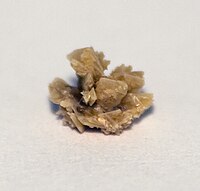Lithiasis
In medicine, lithiasis is the formation of calculi in an excretory tract (urinary, biliary, pancreatic, salivary, lacrimal, etc.). Stones are named more specifically according to the organ where they form:
- Urolitiasis. The term includes the calculations formed or hosted in any part of the urinary apparatus, although depending on their location they may adopt different names such as nefrolitiasis when we speak of kidney stones.
- biliary path: colelitiasis when located in the gallbladder, if located in the bile pathways is a coledocolitiasis.
- Salival glands: sialolitiasis.
Etymology
Vesicular lithiasis is one of the oldest known diseases, Egyptian mummies have even been found that had suffered from this disease.
The material that makes up these stones can have a pre-eminence of calcium and phosphates, which makes them extremely hard. There are other calculi with a softer consistency, with an abundance of fat in their formation, which makes them softer.
As an example, it can be said that 80% of gallstones are cholesterol.
Its size can vary from that of a grain of fine salt to that of a golf ball. A patient may have a single stone or hundreds of them.
Treatment of kidney stones
If the treatment of the symptoms does not result in the spontaneous expulsion of the stone, then you should go to:
- Chemistry: hydrating the patient and alkalinizing his urine.
- Endoscopic extraction: in small calculations it is fragmented and extracted.
- Percutaneous nephrolytomy: similar to the previous one but with a nephroscope.
- Litotricia with shock waves: calculations are fragmented by shock waves.
- Open surgery: last alternative, is used less and less.
- Laser litotricia: technique that uses laser light to produce photodisruption (exposition time. 1 ns and energies from 1011 1016W/cm2). The biological effect is mediated by plasma sparks, generation of shock waves, cavitation and formation of jets.
Treatment of gallstones
Most cases of gallstones are asymptomatic.
- In asymptomatic lithiasis: Periodic clinical-ecographic controls will be made to over 65 and women for the risk of vesicular carcinoma. Colecystectomy is recommended because of the risk of carcinoma, whose mortality is quite high.
- In symptomatic litiasis: the first method is laparoscopic cholecystectomy. Its appearance meant a great surgical advance.
The second method is traditional cholecystectomy, approached by Köcher incision or right paramedian.
Contenido relacionado
Hamate bone
Pediatrics
Bronchoscopy
